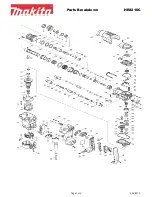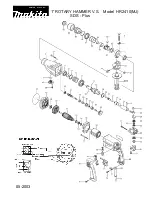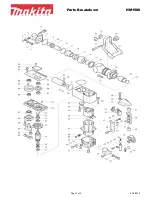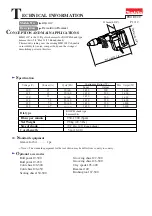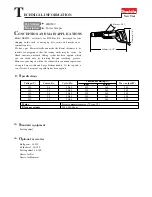
9
Always use approved safety
glasses or face shield while operating buffer.
Also use appropriate respiratory protection.
8.1
General procedure
1. Turn on buffer and apply compound to lower
part of spinning wheel (not the workpiece). Do
not apply excessive compound; press
compound stick lightly against wheel for only a
few seconds. Reapply later as needed.
2. Grip workpiece firmly and press it against
underside
of wheel, that is, the area of wheel
that is rotating
away
from the workpiece. See
Figure 8-1.
Press workpiece to lower
half of buffing wheel only. Using upper half
of wheel may cause workpiece to catch and
could result in injury.
Figure 8-1
8.2
Operating controls
See Figure 8-2. Press on/off button on keypad to
turn machine on. Press any of the numbered buttons
to start machine at the designated speed. Press
arrow buttons to change rotation speed in 100 RPM
increments. The digital readout displays RPM.
When operation is finished, press on/off button and
allow the wheels to spin down to zero. Press on/off
button again to shut off machine.
When OFF button is pushed,
wheels may take a few moments to completely
stop.
Note: After extended operation, the buffer housing
may be warm to the touch. This is normal.
The buffing machine will automatically shut off after
10 minutes of inactivity.
Figure 8-2: keypad
9.0
User-maintenance
For safety, unplug machine from power source
receptacle before adjusting or performing any
maintenance. If the power cord is worn, cut or
damaged in any way, have it replaced immediately.
Motor bearings are permanently lubricated and
sealed at the factory and require no additional
attention.
9.1
Changing Wheels
If you replace a wheel, obtain one with a safe rated
speed at least as high as the maximum 3600 RPM
of the buffing machine. The buffing wheel should be
maximum 8” diameter with 5/8” bore.
The spacers on the shaft allow for different
configurations and widths of buffing wheel.
The use of any other accessory
is not recommended and may result in serious
injury!
9.2
Wheel balancing
With the buffer
unplugged from the power
source
, and arbor nuts snugged down, rotate
wheels by hand and observe their motion.
A buffing wheel has proper balance when:
1. The wheel’s outside face spins true and round;
that is, its circumference rotates concentric to
the arbor.
2. There is no side-to-side wobble.





















